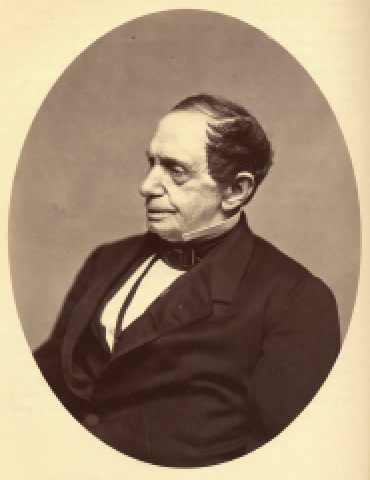
Johns Hopkins was born on an Anne
Arundel County tobacco plantation on May 19, 1795. His education was interrupted
when his Quaker parents freed their slaves and sent their two oldest sons
to work in the family's fields. Johns and his brother continued their education
at home in the evening hours after their chores were finished. Hopkins
survived an attack of cholera and witnessed the effects of epidemics of
smallpox and yellow fever that struck Baltimore. Like John McDonogh, he
gave little indication during his lifetime that he had generous plans for
his fortune.
After working for a time in his
uncle's wholesale grocery business, Johns went into business for himself,
taking as a partner a Quaker friend, Benjamin Moore, establishing Hopkins
and Moore (which later became Hopkins & Brothers). Hopkins & Brothers
sent Conestoga wagons loaded with wares and "Hopkins' Best" corn whiskey
into the Shenandoah Valley. Hopkins later turned to banking. He invested
in the B&O Railroad, became a director and then chairman of its finance
committee. Twice, in 1857 and in 1873, he put up his own fortune to save
the B&O Railroad from bankruptcy.
Hopkins' obsession with making money
was often the source of good-natured taunts. One of his fellow merchants,
George Peabody, claimed that Hopkins was the only man he'd ever met that
was more anxious to make money and determined to succeed than he was himself.
Like Peabody, Hopkins felt an obligation to give back to the city where
he had made his fortune.
Like many Baltimore businessmen,
Johns Hopkins took an interest in the work of local artists. In 1832 Hopkins
commissioned a young Baltimore painter named Alfred Jacob Miller (1810-1874)
to paint portraits of his mother, Mrs. Samuel Hopkins, and himself. Miller
painted his most outstanding work, The Trapper's Bride, for Hopkins,
who purchased the work in 1856. Support from wealthy Baltimoreans like
Hopkins made it possible for Miller to go to Europe in 1833 to continue
his training as an artist.
The Johns Hopkins University,
ca 1895
When Johns Hopkins died on Christmas
Eve 1873, he left his fortune of $8 million to found a university and hospital.
Hopkins' will stated that the hospital was to "compare favorably with any
institution of like character in this country or in Europe" and, remarkably
for its time, the hospital was to treat "the poor of this city and state,
of all races." This was at the time the largest bequest in U. S. history.
Hopkins' bequest also established a home in Baltimore County for African-American
children. |